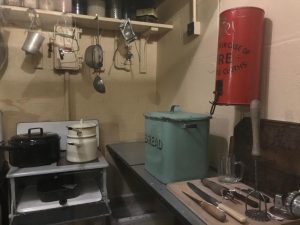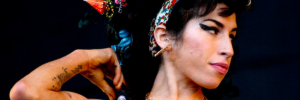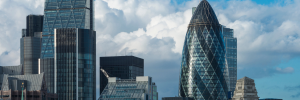Much of what was built for the Festival of Britain was temporary and after the event was dismantled. In both Wales and Scotland, little remains. In London some remarkable examples have survived, which is what I will be sharing with you today…
The Southbank
One could argue that the greatest legacy of the Festival of Britain is the stretch of former industrial riverside near Waterloo we call the South Bank. Since then it has grown to embrace the London Eye, the BFI and the Tate Modern (the most visited modern art museum in the world).
The Royal Festival Hall is one of the only buildings to endure past the end of the summer of 1951.This brand new concert hall, designed by Robert Matthew and Leslie Martin, was able to seat 2,900 people, and was constructed using reinforced concrete, luxurious timber and fossilised limestone, creating a modernist feel that was simultaneously organic. The extensive use of glass ensured that the Hall was bright and luminous during the day, and that it illuminated the wider South Bank site after dark. Particular attention was paid to the acoustics of the auditorium, which were designed to be state-of-the-art. The Festival Hall opened on the 3rd of May 1951 with a concert attended by the Royal family, to widespread critical acclaim. The dramatic beauty of the Hall’s interior impressed its early visitors, and ensured that the Festival would leave a monumental legacy on the South Bank. For some critics the Royal Festival Hall was seen as too innovative and even certain furnishings in the Café met criticism for being too gaudy.
The Skylon
Skylon is a name you will see on the Southbank but you won’t be able to see its originator.
Adjacent to the Dome of Discovery was the Skylon, a breathtaking, iconic and futuristic-looking structure. The Skylon was an unusual, vertical cigar shaped tower supported by cables that gave the impression that it was floating above the ground. Some say this structure mirrored the British economy of the time having no clear means of support. The evening before the Royal visit to the main Festival site, a student is known to have climbed to near the top and attached a University of London Air Squadron scarf!
Some would describe the skylon as a functionless structure in the shape of a rocket but it was the icon for the festival, a sleek, dynamic symbol of an exciting future for Britain. What became of the Sklon is unconfirmed. I have heard that it was demolished on the orders of Winston Churchill (the Labour government-commissioned Skylon was seen as a symbol of socialism).
The Skylon may be no more but it and its neighbours seeded a fascination for pointless iconic buildings. I have already mentioned the Millennium Dome offered a nod to the festival’s Dome of Discovery, one could argue Anish Kapoor’s ArcelorMittal Orbit, nicknamed the helter skelter, at the Elizabeth Park displays the same Skylon-style space-age name and aspirations.
Telekinema
One of the most popular attractions at the Festival of Britain South Bank site was the Telekinema, a 400-seat state-of-the-art cinema operated by the British Film Institute (BFI). It could screen films, 3D films and large-screen television and it was here that many visitors saw their first ever television pictures.
After the Festival closed in September of that year, the Telekinema became the home to the National Film Theatre, but this building was demolished in 1957 when the National Film Theatre moved to the site it still occupies at the South Bank Centre. The only existing building to be incorporated into the new site was a tall brick tower, built in the nineteenth century to make lead shot by dropping molten lead from a height. This was used to house a large radio telescope and transmitter.
To hear more about the Festival of Britain on our London History Podcast Episode 54: The Festival of Britain.
–
Hazel Baker is an award-winning London Tour Guide and qualified CIGA guide who delivers guided walks and private tours in London. View all of Hazel’s walking tours.



